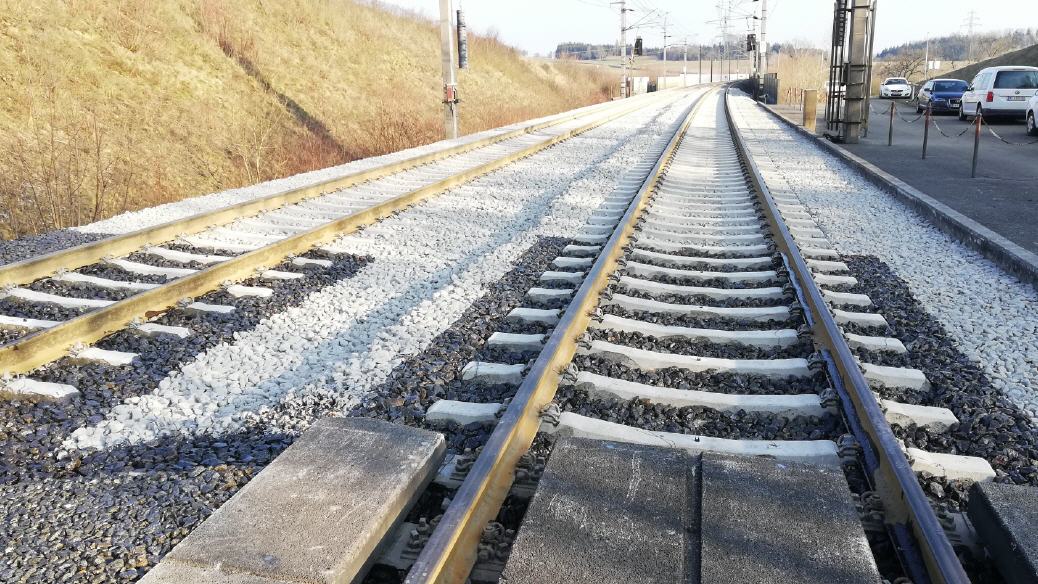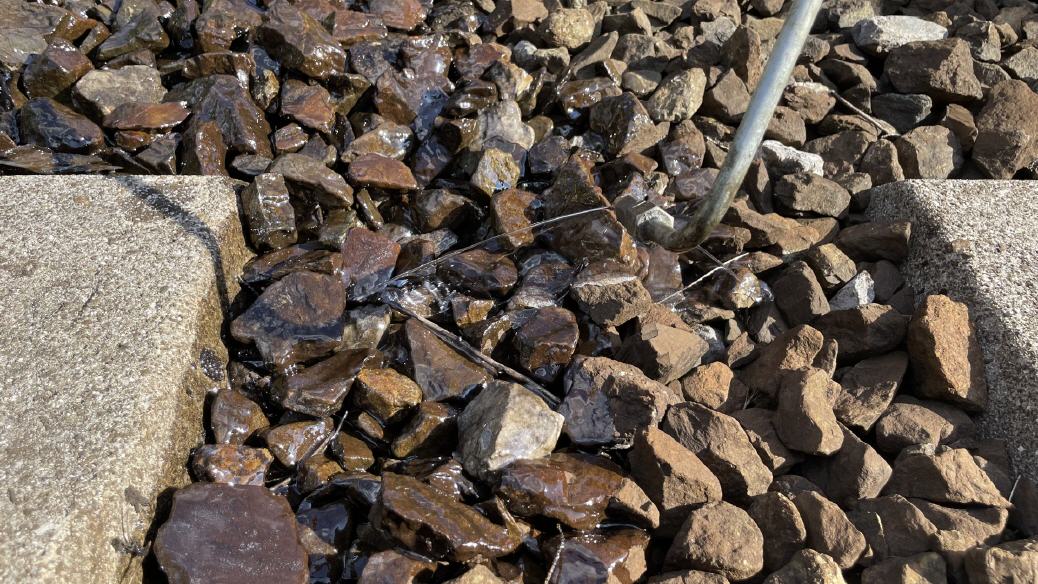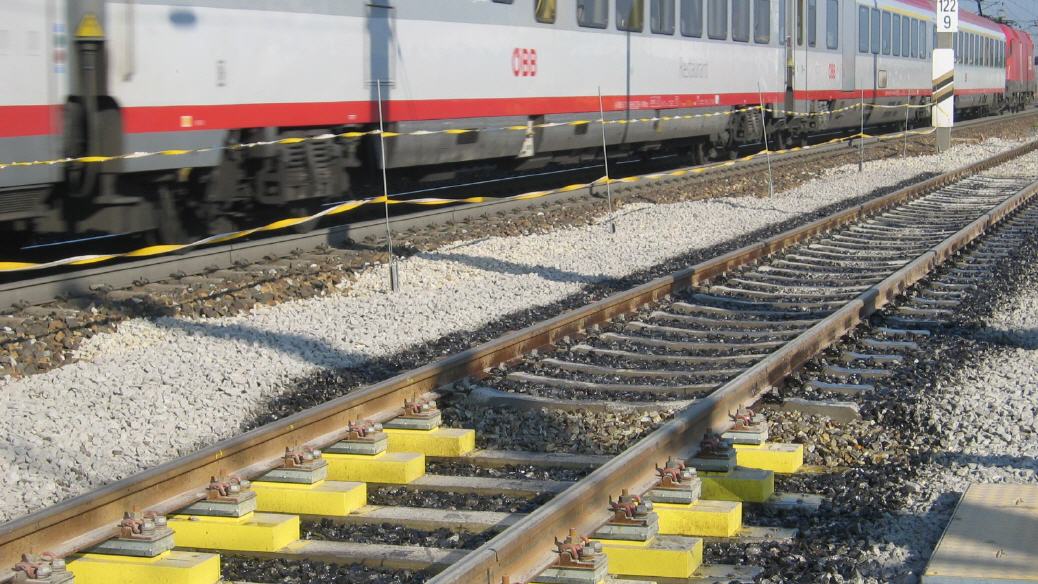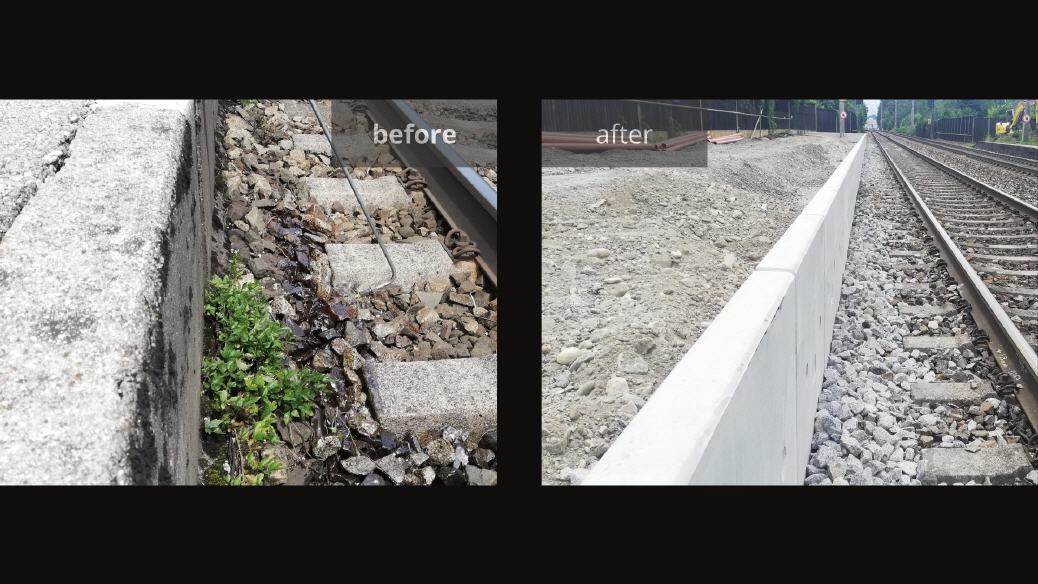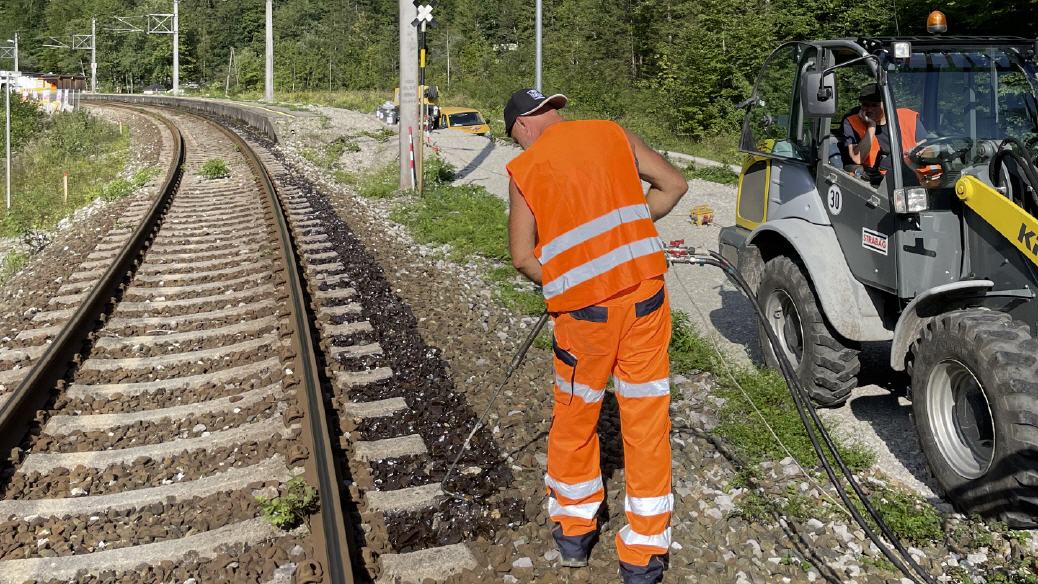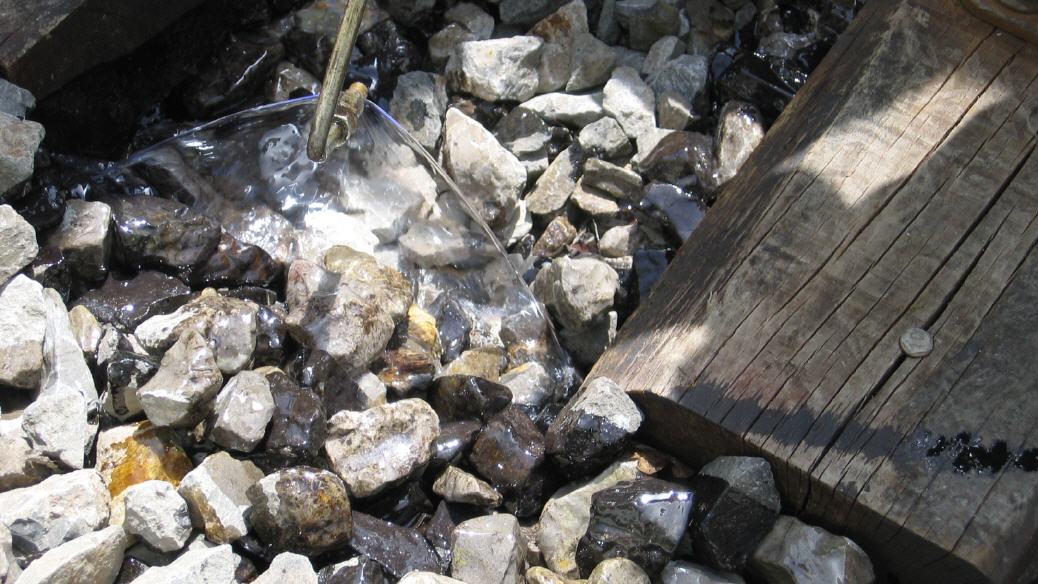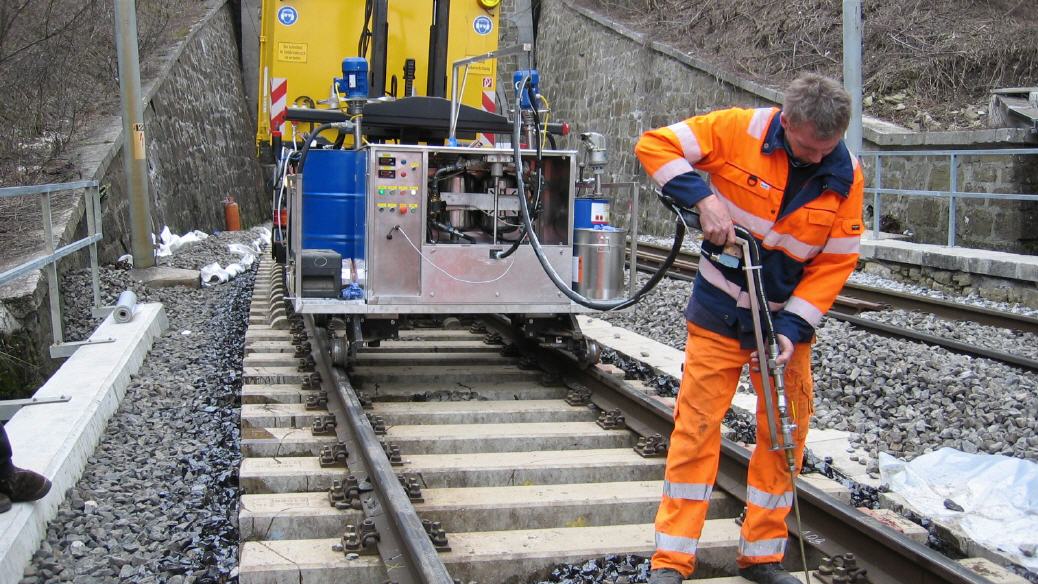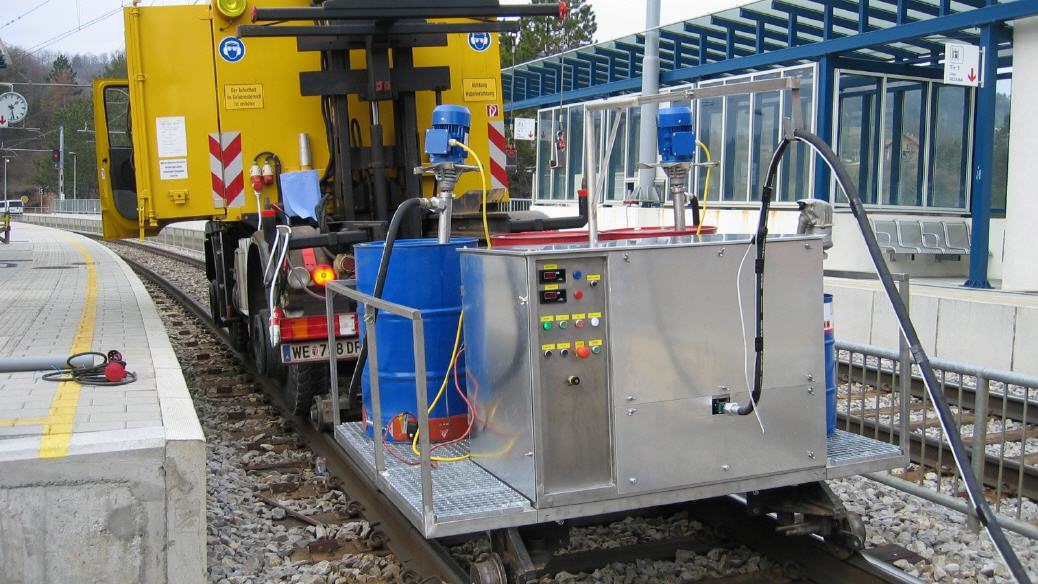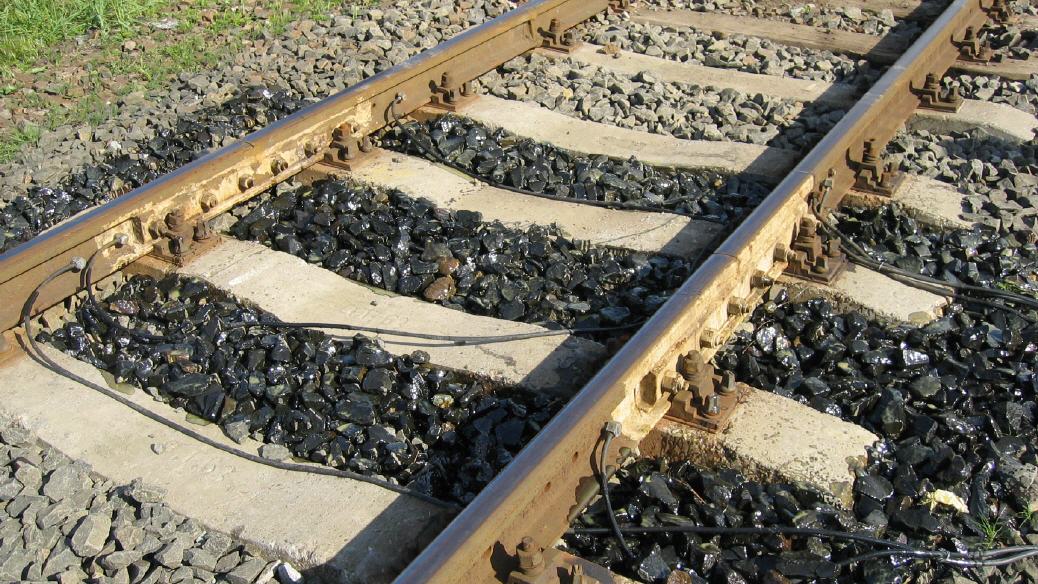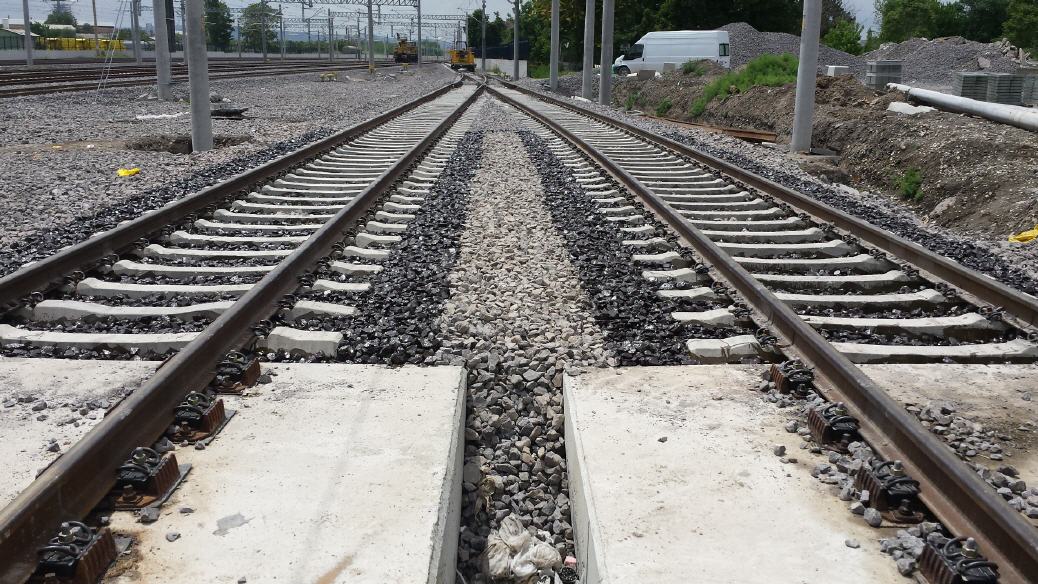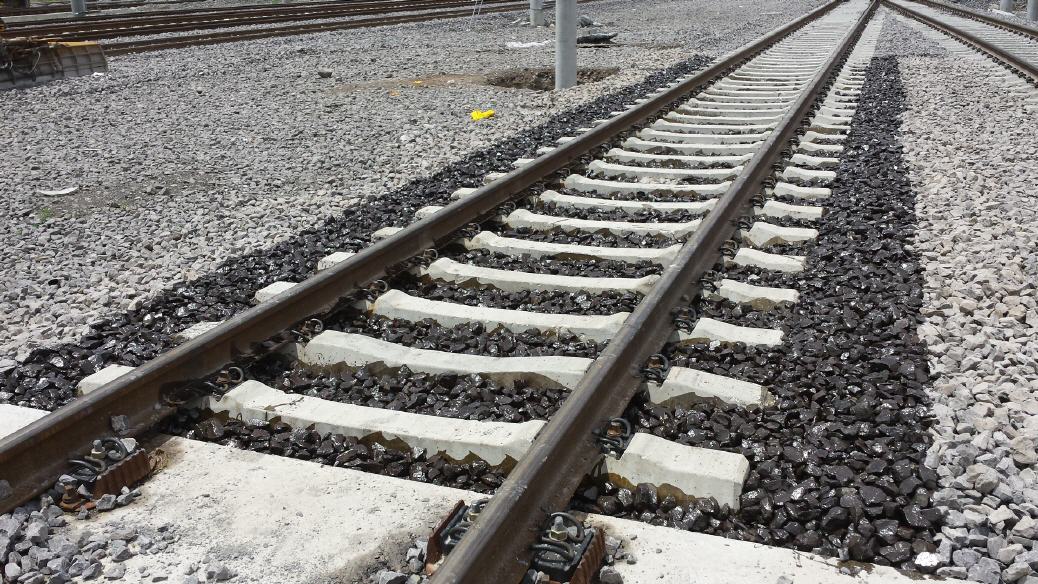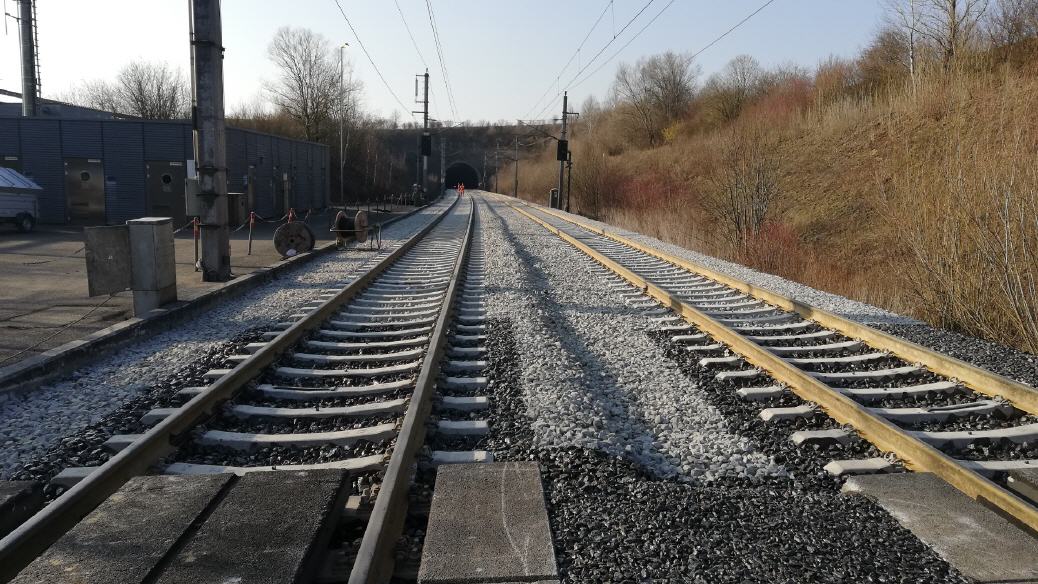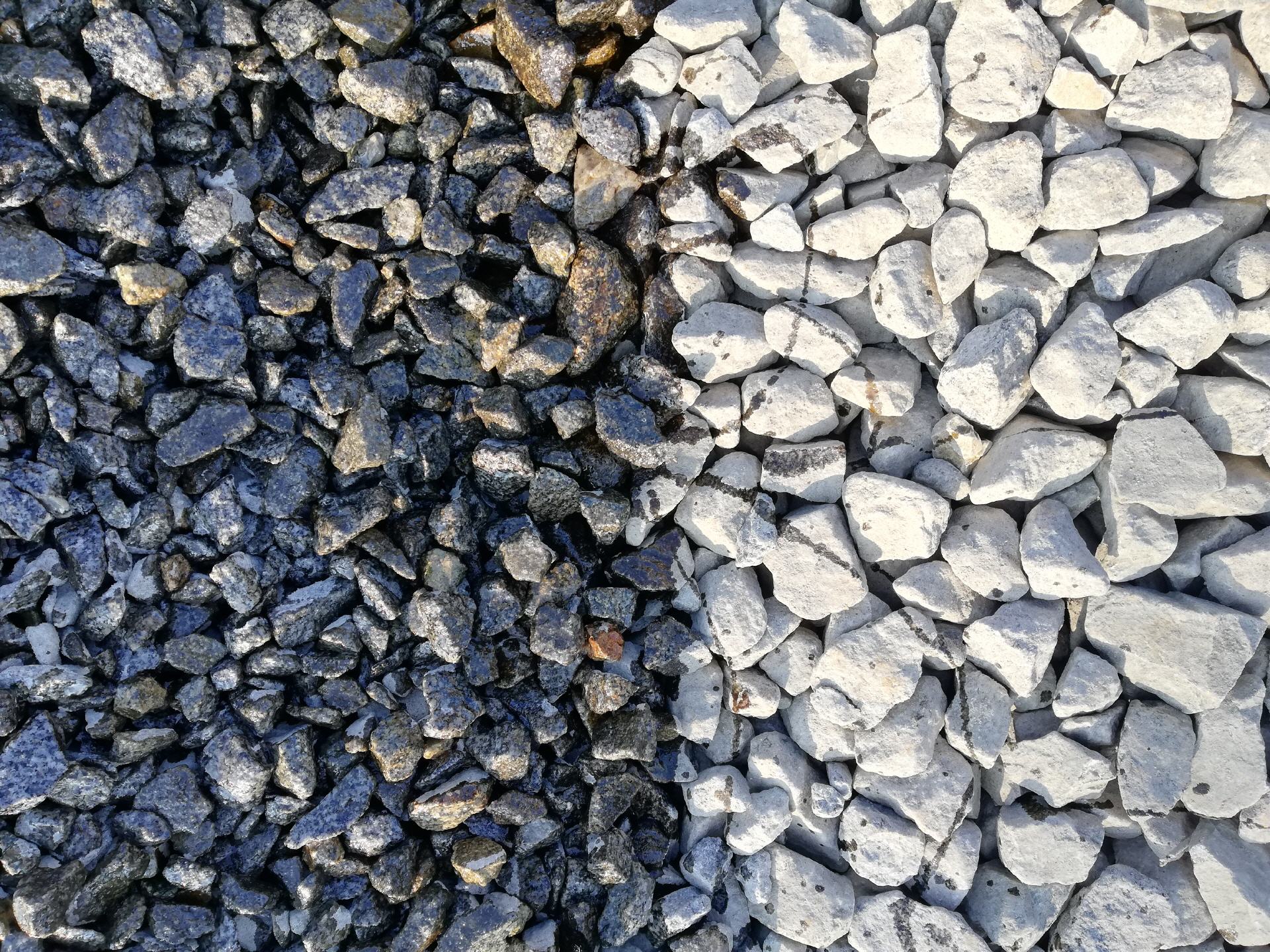 Ballast Stabilization
Ballast Stabilization
Ballast bonding - ballast stabilisation fulfils a wide range of functions:
- Protection against flying ballast by solidification of the ballast surface
- Stabilization of the ballast bed at level crossings and switches
- Stabilization of transitions from slab track to ballast bed superstructure
- Hardening of the ballast shoulder to avoid instabilities
principle
The adhesive is applied to the surface. It circulates the stones and drips downwards. At the contact points of the stones, adhesive dots form which harden within 10-24 hours depending on the temperature. The resulting "connection" is permanently elastic and chemically stable. There are no concerns with regard to environmental compatibility and disposability. The penetration depth depends on the quantity applied and the ballast temperature. Penetration depths of 20-25 cm correspond to the standard. Fine particles have an influence on the bonding process, as they keep the moisture longer in the ballast and prevent it from drying out quickly. A small proportion of fine particles does not represent a significant obstacle.
Material
A liquid, cold-hardening and solvent-free 2-component resin system is used for bonding or consolidation and stabilization. It guarantees a good wetting of mineral substrates, is low viscous and resistant to normal fats and faeces as they are present in the railway sleeper area.
Technique
The application of the resin depends to a large extent on the circumference and geometry of the surface to be bonded. The ballast is bonded with the aid of special mobile 2-component mixing units or by hand for small areas.

